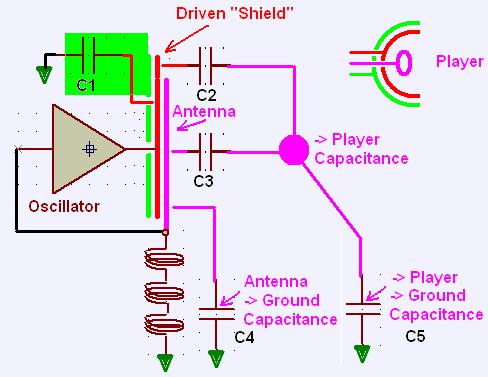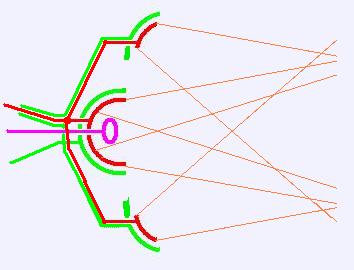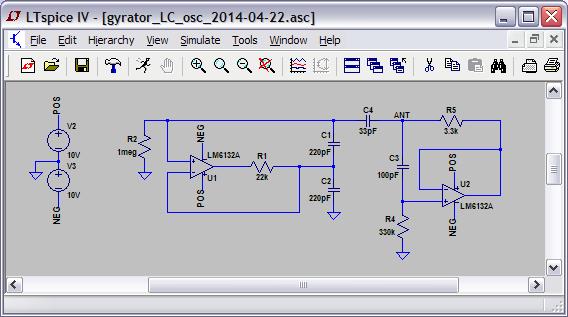Having just posted this, I can see its probably utterly useless and works to make linearity worse not better! ;-)
But if I delete this post, one gets a dead link to this page - so I will leave it for now and either correct it if I find a solution, or perhaps delete it later..
====================================================
Ok - up till now the TX/RX topology above perhaps wasnt too crazy.. But thats about to change! ;-)

I am wondering if the above antenna construction (top right corner) could do anything to improve linearity..
C1 is the capacitance between TX ("Shield") and ground which is fixed by the antenna construction (lets say probably about 1nF)
The antenna and shield are couped by their fixed proximity (say 100pF), The oscillator frequency will be seriously affected by this coupling - Increasing this coupling will lower its frequency (series coupling to the antenna inductor)
The antenna has direct coupling (likely to be lower than usual due to the shields effect) to ground (C4) and to the player (C3).
The player will be coupled to ground by (and this is the bummer) an inconstant capacitance C5) value.
The player will ALSO be coupled to the transmitted (TX "Shield") signal "leaking" from the antenna assembly (C2).
(In my prior simulations I have a capacitor between the oscillator output and the "shield" equal to the value of C1 - but this complicates explanation more that I can manage, although I think it will be needed)
The player becomes quite a complex entity with the above - Both C2 and C3 will be varying as position changes, and there will be (I think) a mixture of coupling effects - There will be the usual increase in capacitance as a result of increased ground coupling on the antenna as the players hand approaches it, causing a lowering of the oscillator frequency - but there will (?) also be an increase in capacitive coupling between the shield and antenna (effectively via C2 -> C3) acting to increase the oscillator frequency. (Where did this nonsence come from ??? ;-) !
The question is, can the antenna assembly be engineered to actually cause these opposing effects to implement linearity?
An alternative / additional idea is to have a couple of seperate ground shielded "TX" antennas oriented to provide increased "TX" coupling to the player in the near field:
(Actually, the only hope would probably be to focus these TX antennas to the far field)

I actually have no idea if any of this idea has any merit, either theoretically or practically - I may be thinking nonsense.
Fred.



